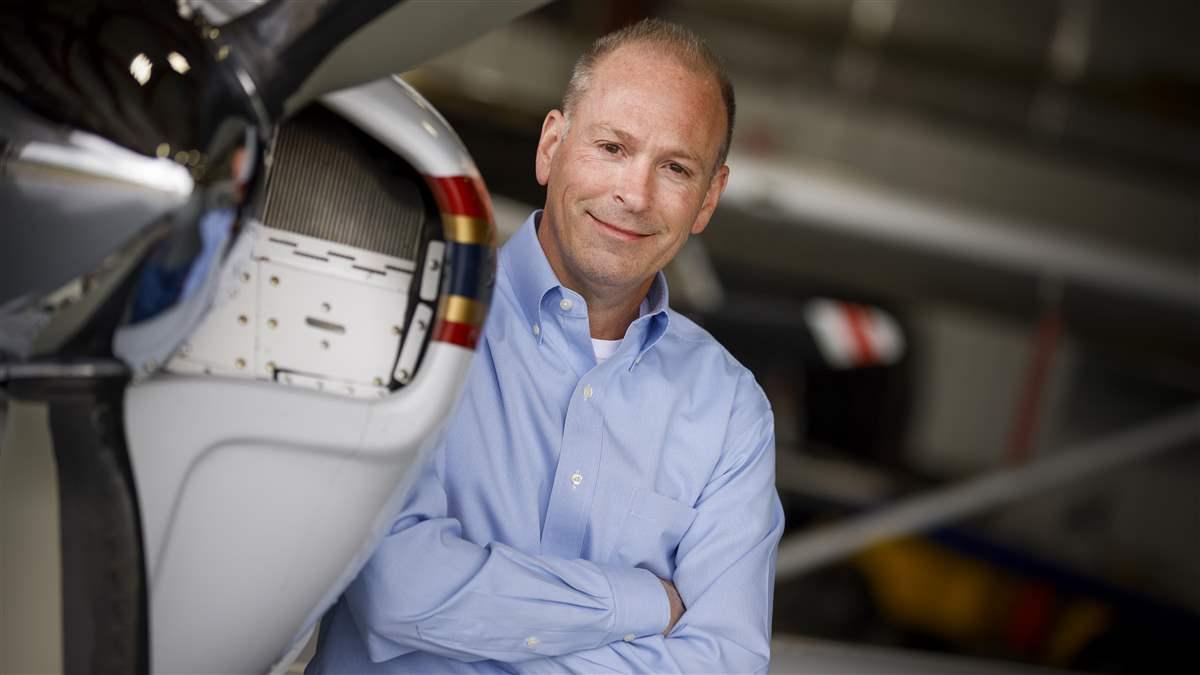Aero abounds
Trade show displays best of GA in Europe

Aero is the largest European show for general aviation, and it is held annually at Bodensee-Airport Friedrichshafen (EDNY) on the southern edge of Germany.
Aero is not an airshow in the sense of EAA AirVenture Oshkosh or Sun ’n Fun. In fact, Aero calls itself a trade show—although there is one 45-minute-long e-flight “silent” airshow and one two-hour aerobatic airshow during the four-day event.
What is special about Aero is the display of remarkably innovative GA aircraft and technologies from all over Europe—many of which have not yet made their way to the United States.
Aero is arranged more like a trade show than an airshow, with 12 hangars housing most of the 328 aircraft and 760 exhibition booths. The aircraft are organized in a very logical way that makes finding what you are looking for easy: separate hangars for general aviation aircraft, business aircraft, electric aircraft, ultralight aircraft (what we currently call LSAs in the United States—or hope to soon with the new MOSAIC rules), helicopters, gliders, drones, and avionics and flight simulators. Additionally, there was an outdoor static display area for larger business aircraft.
I was impressed by the number of ultralight aircraft produced by European manufacturers that could soon be considered LSAs in the United States. I counted 24 manufacturers who are producing bubble-canopy low-wing airplanes powered by Rotax 915 or 916 engines with fixed or retractable gear and fixed-pitch or constant-speed propellers. It’s hard to imagine that this many manufacturers producing airplanes with similar designs can coexist, but it is exciting to see the innovation and potential options for U.S. buyers.
There were also numerous Rotax-powered helicopters in the helicopter hangar. During a conversation with Rotax Manager of Aircraft Business, Marc Becker, I learned that Rotax estimates 25 percent of all new GA aircraft are fitted with a Rotax engine. This Austrian-based company continues to design increasingly powerful engines, and it’s evident more European and United States manufacturers are using these engines to power their aircraft.
If you’d like to see a comprehensive listing of these European aircraft (and many others), you can download a PDF of the World Directory of Light Aviation—a recently added AOPA member benefit—at aopa.org/offers. The WDLA is the most complete buyers guide featuring more than 1,000 general aviation aircraft and supplies from around the world.
This is probably a good time to remind you that there is a strong international component to AOPA called the International Council of Aircraft Owners and Pilots Associations (IAOPA), which is a nonprofit federation of more than 80 international AOPA affiliate organizations. Since 1962, IAOPA has been protecting pilots’ freedom to fly globally.
At the IAOPA booth, AOPA introduced a new service called AOPA Registered Agent. This service helps individuals comply with the FAA’s new rules that require those with addresses outside the United States, and no United States physical address of record on file with the FAA, who hold or apply for certain certificates, ratings, or authorizations (such as pilots, flight attendants, air traffic controllers, and mechanics) to designate a United States Mail Agent to receive safety-critical and time-sensitive FAA documents. If you fall into this category, please visit aoparegisteredagent.com for more details about this new service.
A highlight of my visit to Aero was the opportunity to fly in the Chinese-built Rhyxeon General Aircraft Co. Ltd. RX4E—the world’s first certified four-seat electric aircraft—during the e-flight airshow. Flying in the back of the aircraft felt…normal. The RX4E proves that electric-powered aircraft continue to evolve and could someday be an alternative to piston-powered aircraft.
Tariffs were briefly a hot topic on the opening day of the show, with one European manufacturer lamenting they had waited years for MOSAIC to be approved so their airplanes could be considered LSAs in the United States, only to have the tariffs potentially make their aircraft too expensive to sell within the country. The Trump administration’s 90-day tariff pause put a swift end to the tariff conversations at Aero, but it’s a topic that will likely affect general aviation and one AOPA will be following closely.
If you are able to attend Aero in the future, make sure to set aside half a day to visit the Zeppelin and Dornier museums in Friedrichshafen. There is fascinating airship and flying boat history in this lakeside city that is worth exploring. 



